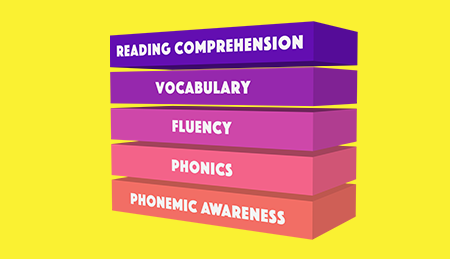Reading is great, but not enough for learning new vocabulary
Reading has a smaller impact on vocabulary acquisition than you might think - kids need more support. Converging research evidence supports the idea that explicit (direct and structured) vocabulary instruction yields significantly better results than reading alone.[1],[2],[3]
This has implications for teaching vocabulary, and the types of vocabulary activities parents might want to consider doing with their kids.
A study found that left to read alone, the average child will spontaneously ‘work out’ the meanings of only 15% of the unfamiliar words they encounter.[4] Let’s spell this out: For a typical 12,000 word children’s book, there will be 240 new words [5], of which an unsupported child will learn just 36 at the first time of reading. The rest will remain a mystery, limiting that child’s understanding and enjoyment of the story.
This means that such approaches to reading are missed opportunities for extremely productive vocabulary learning. If children have too many unknown words in a text, their overall reading comprehension of the text will be blocked and reading will become frustrating. Students deem a text too difficult when they don't know at least 98% of the vocabulary used. But in order for someone to achieve this 98% coverage required for comprehension, knowledge of 8,000 to 9,000 word families is required.[6] This breadth of vocabulary knowledge is hard to achieve without the aid of at least some direct instruction.
What is direct vocabulary instruction?
Direct instruction is a method that provides children with rich content about words in a way that engages their attention. It provides kids with information such as a definition, example sentences to show how the word is used in context, etymology, visual aids, and any other information that would help make the learning of a new word broader and deeper.
Why does direct vocabulary instruction work?
Explicit instruction gives children rich enough information to comprehend what a word means deeply and accurately. The reason this is important is that unless children can find out what a word means, they will neither understand the text they are reading, nor learn the new words they come across.
Explicit instruction requires higher levels of thinking and more active engagement with words. These active methods enhance both the learning and the memorization of new words much more effectively than incidental, passive word learning during reading.[7]
Importantly, explicit vocabulary instruction gradually increases word consciousness, meaning that children become more aware of relationships between words, as well as how language works in general and how they interact with it. Greater word consciousness not only helps children consolidate, integrate, access, and demonstrate the word knowledge they already possess, but it also helps them access and employ the new words they acquire.[2] Children with higher word consciousness also become more competent at inferring the meaning of unknown words by themselves. Mrs Wordsmith’s range of vocabulary resources use hilarious illustration, written definitions, example sentences, and more to clearly demonstrate words’ meaning in a number of different ways.
What's next?
Explore our range to find the best way to raise your child's word consciousness.
And read more about how reading with your child is literally brain-changing.
Sources for further reading:
[1] Beck, I., McKeown, M. (2007). Increasing Young Low-Income Children’s Oral Vocabulary Repertoires through Rich and Focused Instruction. The Elementary School Journal, 107(3), 251-271.
[2] Coyne, M., McCoach, D., Loftus, S., Zipoli Jr, R., Ruby, M., Crevecoeur, Y., Kapp, S. (2010). Direct and Extended Vocabulary Instruction in Kindergarten: Investigating Transfer Effects. Journal of Research on Educational Effectiveness, 3(2), 93-120.
[3] Marulis, L., & Neuman, S. (2010). The Effects of Vocabulary Intervention on Young Children's Word Learning: A Meta-Analysis. Review of Educational Research, 80(3), 300-335.
[4] Swanborn, M.S.L. and de Glopper, K. (1999) Incidental Word Learning while Reading: A Meta-Analysis. Review of Educational Research. 69 (3), pp. 261-85.
[5] Carver, R. (1994). Percentage of unknown vocabulary words in text as a function of the relative difficulty of the text: implications for instruction. Journal of Reading Behavior. 26 (4), pp. 413-437.
[6] Nation, I. S. P., (2006). How large a vocabulary is needed for reading and listening? Canadian Modern Language Review, 63(1), 59-82.
[7] Loftus-Rattan, S., Mitchell, A. (2016). ‘Direct Vocabulary Instruction in Preschool: A Comparison of Extended Instruction, Embedded Instruction, and Incidental Exposure’. The Elementary School Journal, 116(3) 391-410.


























Comment
Leave a comment